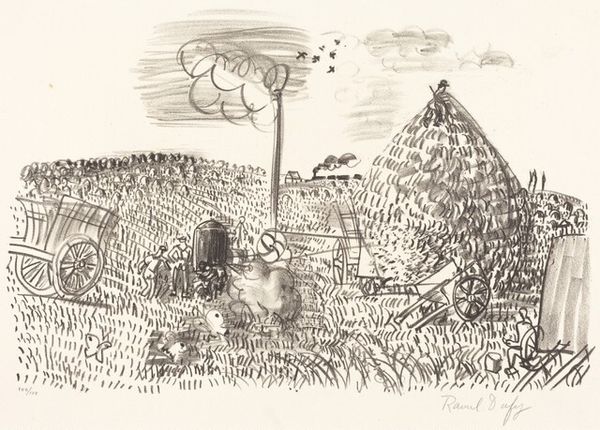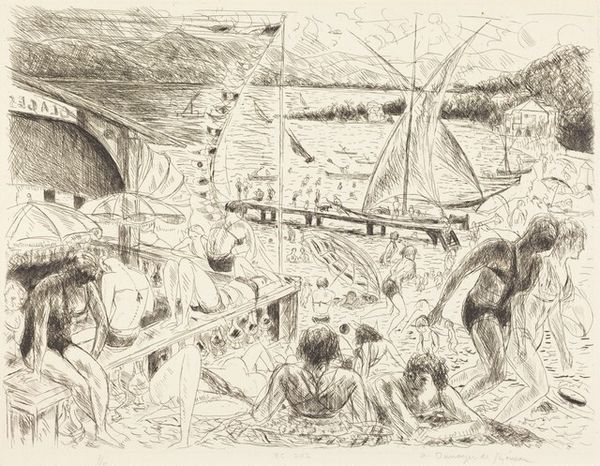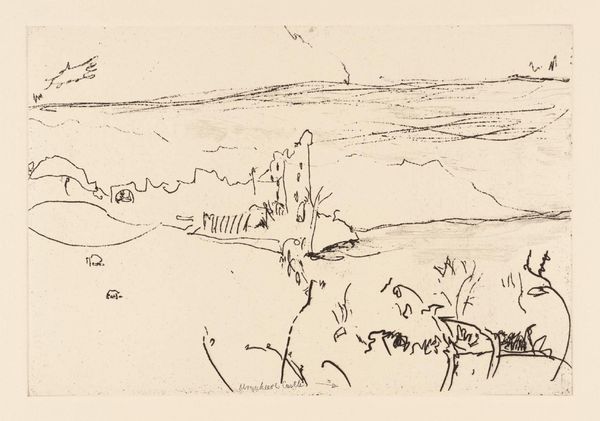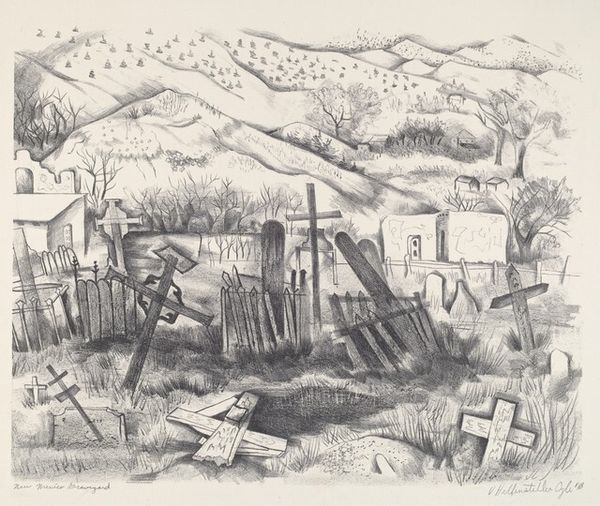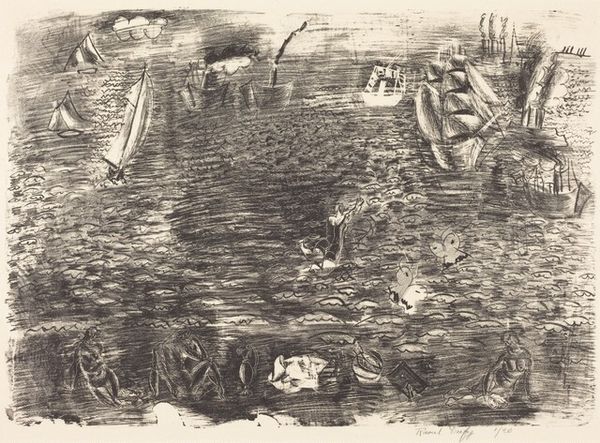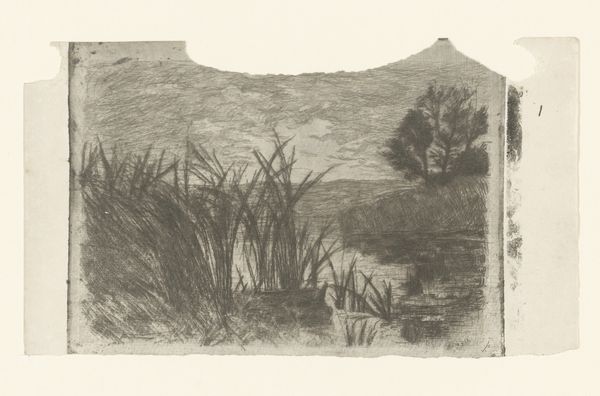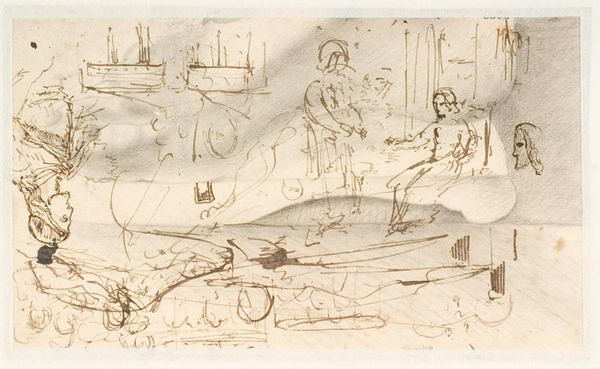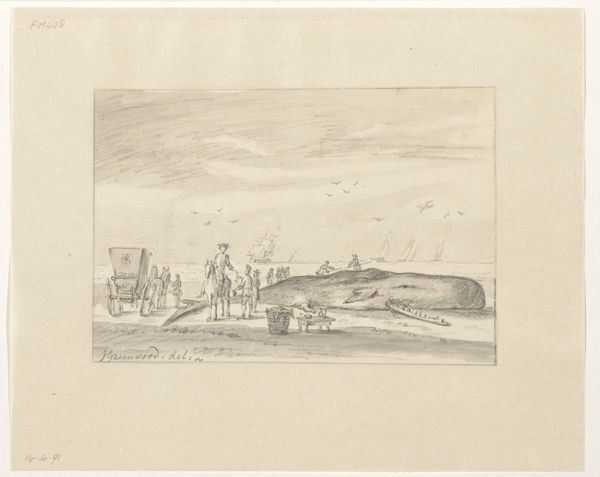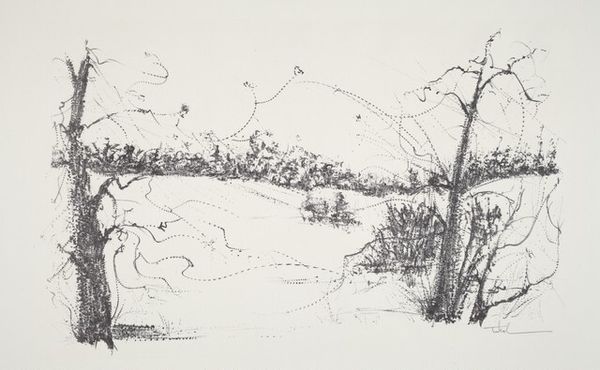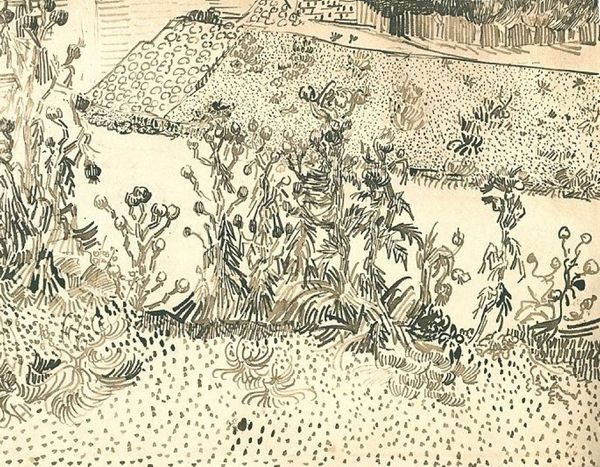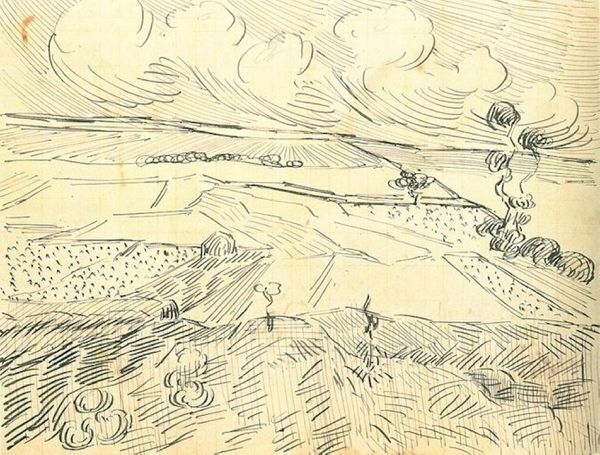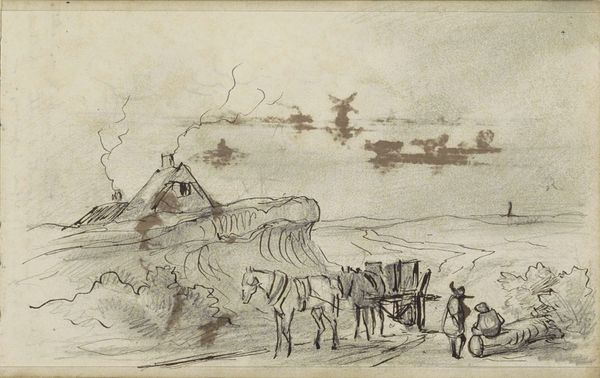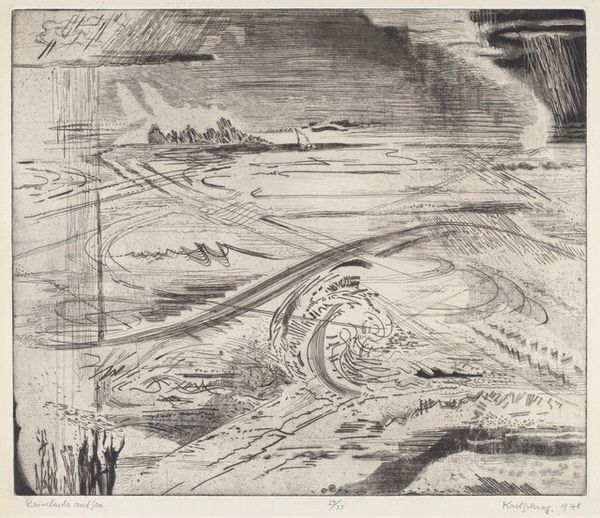
Dimensions: sheet: 48.3 × 63.7 cm (19 × 25 1/16 in.)
Copyright: National Gallery of Art: CC0 1.0
Curator: Here we have Raoul Dufy's "The Beach (La Plage)," created circa 1920-1925, a work rendered in pencil and ink on paper. Editor: Immediately I’m struck by how alive the scene feels, despite being rendered in monochrome. There's a breezy, summery energy, a sense of leisure. Curator: Dufy captures a sense of bourgeois leisure that permeated post-war Europe. The beach becomes a stage for societal rituals—the divers, the fashionable bathing suits, the promenading figures… He reduces it to archetype. The swimsuit alone, particularly its striped pattern, became a symbol of modernity at the time. Editor: The materials speak to a certain accessibility as well. Pencil and ink, paper - these were readily available, not the expensive oils and canvas we might associate with 'high art.' This suggests a democratization of artmaking, of capturing the everyday. Curator: And notice how the ink lines give definition but remain open. Nothing is definitively closed, giving it all a sense of immediacy and fleetingness – which enhances the depiction of summer revelry. The image holds certain cultural memories too; the scene itself and those stark, linear figures call back to both classical friezes and a more contemporary visual language taking hold. Editor: Right, and I see a tension between that linearity and the density of marks used to create texture, especially representing the sea and shore. It speaks to the physical act of drawing, the hand moving rapidly, making countless tiny gestures that build up into the whole scene. What kind of paper do you think he used? Curator: Likely a widely available stock. Its absorbency would've been ideal for the ink, allowing Dufy to work relatively quickly and without overly fine detail. That lightness is precisely the point. Editor: Perhaps his selection also represents the move towards making fine art more accessible to a broader audience, something reproducible and relatively inexpensive to create. Curator: Considering these intertwined approaches to materiality, labor, and historical iconography allows us to think about the broader significance of “The Beach.” Editor: Exactly, viewing this work through the lens of both symbolic content and the accessible artistic methods used really lets one appreciate its complexity.
Comments
No comments
Be the first to comment and join the conversation on the ultimate creative platform.
